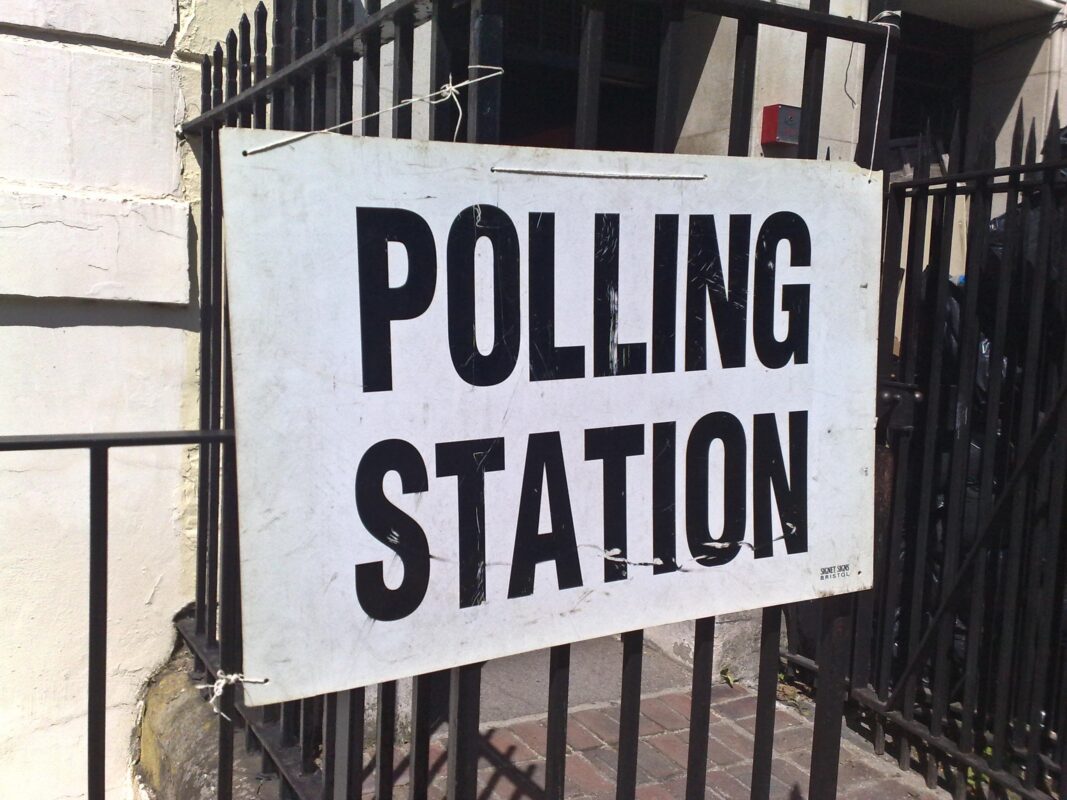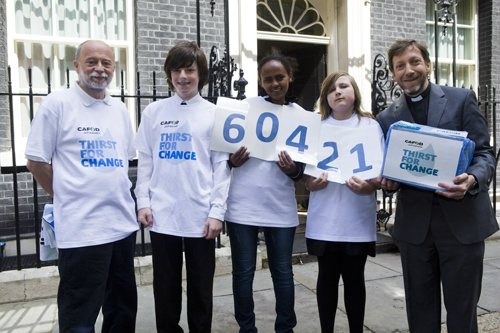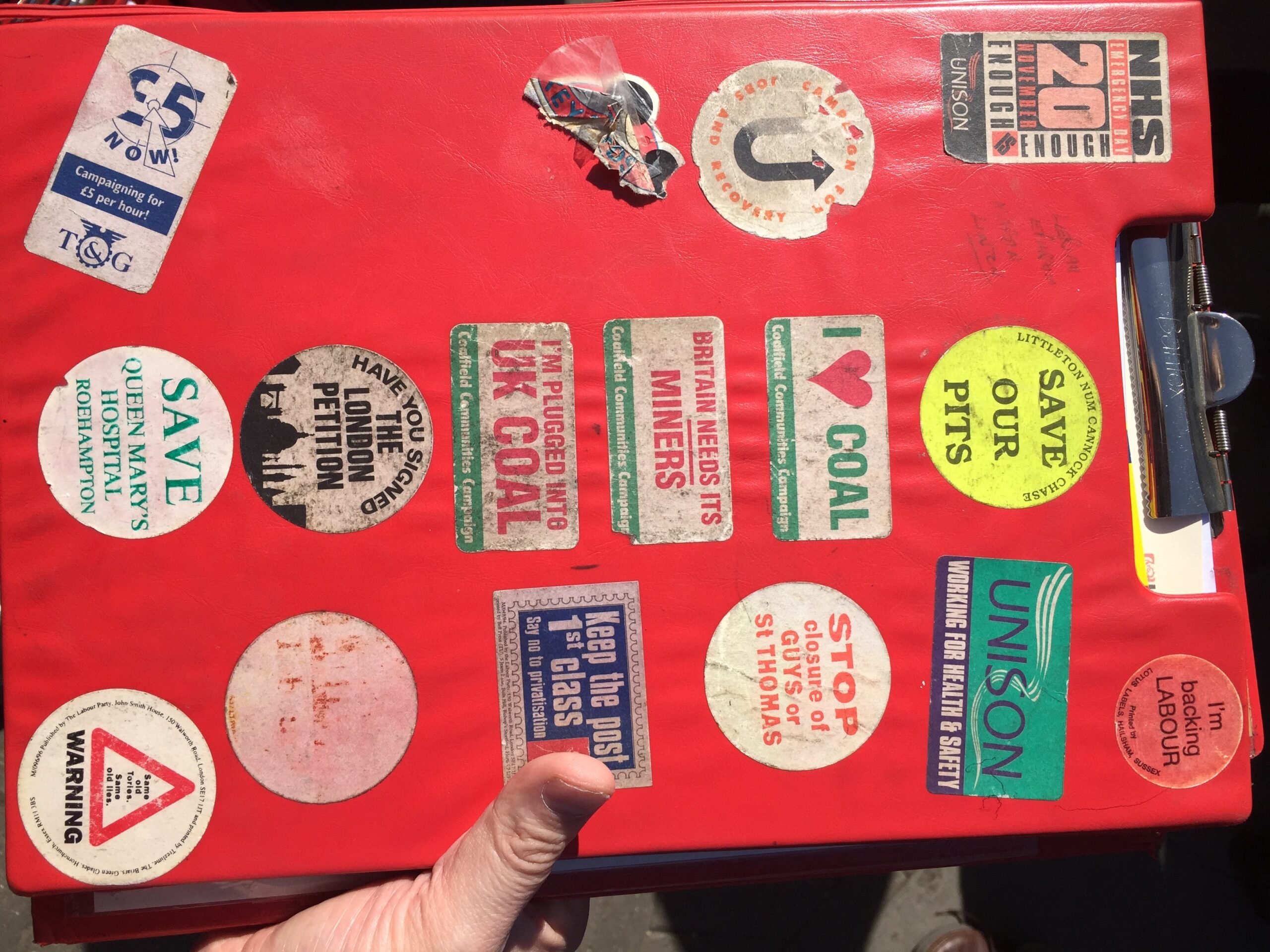Like many others, I didn’t wake up expecting that a General Election would be called today – but it has been.
I wrote this ahead of the 2015 General Election (and perhaps as importantly this after the 2015 election) which contains lots of advice and ideas that I think are as relevant today with the prospect of a ‘snap’ election than back in early 2015.
But here are 8 things I think campaigners need to be thinking about ahead of Thursday 8th June;
1) Check the law – As charities, you can’t engage in party politics, that is supporting one candidate over another, or providing an endorsement to one but not another, but we can, indeed we’re encouraged to engage in politics. Every campaigner should check out the guidance from the Charity Commission on campaigning in election periods.
As I write, I’m still not clear what happens with the timescales of the Lobbying Act, which was set up to work around the timelines of the Fixed Term Parliament Act, but also places further limits on what you can/cant’ do – I’d keep an eye on the NCVO or Electoral Commission website on this. But make sure that you’re checking in with legal experts who know what they’re talking about before you plan activities.
2) Read your evaluations from 2015 – As campaigners, we often love to dive into new plans, without considering what we learned from the last time around. While the political context has changed, May 2015 really wasn’t that long ago, so undoubtedly there are useful learnings from evaluations. Now is the time to dig them out!
3) Message discipline – If Trump with ‘Make America Great’ and the Leave campaign with ‘Take Back Control’ have taught campaigners anything, it’s the important to message discipline. Elections are times when more people are switched on to politics, but they’re also nosey times as well. So it’s much harder for your ten well reasoned and evidenced policy points to cut through! Focus on a single key message and keep talking about it!
4) The gift of time – The most precious commodity any candidate has between now and election day is time. You can’t create any more of it! You can always try to recruit more volunteers, raise more money, but you can’t create any more time. The polls close at 10pm on Thursday 8th June. Think about this in the design of the activities that you’re planning. If you want to get a candidate aware of and involved in your campaign think about how you can do that.
Provide candidates with something in return for engaging with your campaign, the opportunity to meet local voters, a photo they can send to the local paper or thanks on twitter. Also, think about the medium of your message, most candidates will tell you that they’re already being inundated with emails and briefing papers, so what about video messages or infographic.
5) All politics is local – It’s an old adage, but it’s totally true. Candidates are running to be MP for a constituency so that that means the campaigns that succeed do so by making the campaign local, that could be making connections to local figures or events, ensure your statistics are localised or finding local figures to speak out in support of your issue.
Also, think about what you can do to demonstrate the breadth of local support for your campaign the better. Remember most candidates are thinking about events to attend alongside two axes the likelihood of those present actually voting and the likelihood of someone in the room voting for them, so make sure you
6) But be aware of the national context – the graph below shows the top 10 issues in voters minds ahead of going to the polls in 2015. It’s an important reminder that while the issues we campaign on ‘day in, day out’ are top of our mind, for many voters they’re not. So think about that as you design your tactics – given the speed the election has been called quickly, you’re unlikely to be able to push your issue into the top 10. So how do you fix it to something that is already in the list, or being realistic about what you can expect to achieve.
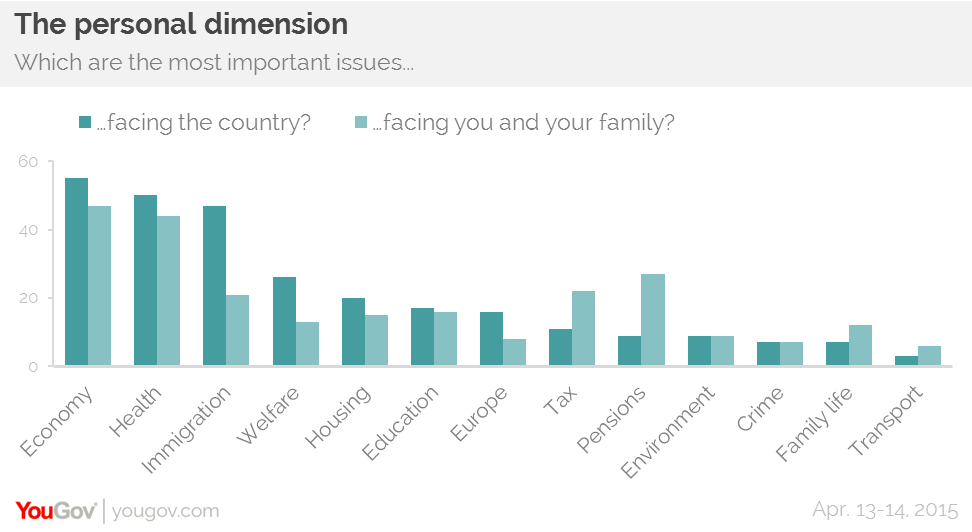
7) Don’t forget June 9th – The election may be over, but the hard work for whoever is elected has just begun. Be ready to follow up with those who’ve been elected, politicians are often accused of only appearing near an election, but can the same be said of campaigners?
Offer to come to meet with them to brief them on the issue, write to them, reminding them of what the said in the campaign and don’t overlook getting in touch with the candidates that weren’t successful – remember that they might be candidates in another election.
8) Look after yourself – With 24-hour news, social media, the endless speculation, and the looming urgency of polling day, elections can be exhausting. Make decisions today about how you’re going to look after yourself during an election, perhaps write it down, or check out this advice from Daniel Hunter. For me, as I’m getting ready for the next few weeks I’m already thinking about the habits I need to keep to!
And finally, as I’ve written before about getting involved in a party political campaigning, and now is a great time to do that. Go and offer to campaign for the party that you most closely align with, go and knock on some doors to find out what voters are thinking!
Category: Uncategorized
What academics can tell us about why some protests succeed (and others don't)
With the rise of protests in the wake of Donald Trump’s election in the US, it’s been interesting to see the emergence of articles looking at the findings of academic studies into protest movements and campaigning. Because they’re not tied to a single issue, they’re able to step back and look at the trends and evidence of what works.
Here are a few key lessons from the evidence that might be useful in the campaigns that you’re running – some of them are more obvious that others!
1. The size of your protest matters, but so does who is involved – Erica Chenoweth has found that active and sustained participation by 3.5% of a population is often enough, but Chenoweth writes that her research finds that ‘An increase in the number and diversity of participants may signal the movement’s potential to succeed. This is particularly true if people who are not ordinarily activists begin to participate — and if various classes, ethnicities, ages, genders, geographies and other social categories are represented’.
2. Make your protest appeal to others – Researcher Robb Willer looked at what happened when three different types of protesters—animal rights, Black Lives Matter, and anti-Trump—used either moderate or extreme protest tactics, and found ‘the reason the extreme protesters were dissuasive is that less-radical bystanders couldn’t identify with them’. So if you want to grow your movement, think about how others view your tactics.
3. Be innovative and flexible – Academics write that those campaigns the adopt a “repertoire of contention” (or use a range of different types of strategies to you and me) are more likely to succeed. The work of Kurt Schlock suggests that movements that adopt a range of approaches, including a focus on centralised efforts like demonstrations and dispersed methods – are more likely to be successful. So if you over-rely on a single method, you’re less likely to win in the end.
4. Academics can’t decide on the best form of organisation – Academics agree that internal cohesion and collective vision are needed to success and resilience, but also warn against concentrating leadership into a single figurehead.
5. People will get involved for surprising reasons – I’ve mentioned the work of Zaid Munson before, but his research on the pro-life movement in the US is a reminder that people often get involved in movements without having particularly strong ideological commitments to them. Munson found that up to half of those who got involved in pro-life activism were indifferent to the issue when they first got involved.
6. Prepare for the day after the protest – The work of Madestam et al looking at the impact of the initial Tea Party protests in 2009 found that large protests were most effective at shaping ongoing policy when they could continue to demonstrate the concerns of those who attended the initial protest to decision makers.
7. All movements need to overcome the ‘coordination problem’ – People only want to show up to a protest when they know others will participate. Social media activity dramatically speeds up coordination — and helps actions to snowball much quicker than in the past, but you still need to convince enough others that they should attend!
Looking ahead – some questions for campaigners
Back in 2014, at the start of my time at Bond I wrote this post on the 4 trends driving campaigns. I was trying to reflect on the big themes that I anticipated would shape campaigning for the networks members (and beyond) in the coming years.
I finished at Bond last week, as I’m moving on to lead the Mobilisation Team at Save the Children UK – I can’t wait to get started working with the team to continue to build a movement to speak out vital issues like child refugees, Yemen and early years education in the UK.
(It’ll also mean that I’ll be putting a pause of blogging until after Christmas so I can focus my energies of getting settled into my new role – but that’s the housekeeping notices out of the way!)
But as I finish my time at Bond after 2+ years, I’ve been reflecting back on those trends – I think they’re all still relevant for campaigning organisations to grapple with – but I’ve also been struck that there are some core questions that campaigns teams need to be discussing.
They’re drawn from some of the articles and reports I’ve been reading, and conversations I’ve been fortunate to have with campaign leaders from the UK and beyond over the last few months.
1. Is our approach Managerial or Networked?
Managerial campaigns are more centralised and controlled. With that can come the opportunities to deliver big ‘set piece’ moment, but managerial campaigns can struggle to respond with the agility that can be expected in the age of instant communications.
Networked campaigns are distributed – they haven’t necessarily given away all control, for example overall political strategy might be held at the centre, but much decision making is pushed downwards, and their is autonomy to decide what is most appropriate at a local level.
Much of my thinking of this is drawn from the Networked Change report I wrote about here.
2. Are we focusing on Mobilising or Organising?
Mobilising is building membership and focusing on maximising the number of actions that can be taken. It can be an effective at demonstrating breadth of support, but can lead to a constant need to invest in recruiting.
Organising is about focusing on building power and leadership with communities. Demonstrating depth of support and building leaders who can engage others.
Much of my thinking here is drawn from the work of Hahrie Han who I help to host when she visited London in March – helpfully summarised by Jim Coe here.
3. Do we have Convening Power or Organising Power?
Convening power is the ability to leverage identity and networks to bring leaders together- for example the ability to get lots of senior leaders to sign onto a letter or a range of organisation to ‘back’ your campaign.
Mobilising power is being able to draw on a base of supporters to back your policy demands and willing to engage in conflict with organised opposition – the ability to bring people out to actively support your issue.
My thinking on this is drawn from a fascinating set of essays on New Models of Change from a US based think-tank New America. This case study on the involvement of US evangelicals in pushing climate legislation is a perfect example of what happens if you only have convening power.
4. Are we just harnessing ‘Stop Energy’ or ‘Go Energy’?
Stop Energy is the ability to use tools to channel ‘moment-specific opposition, expressions of dissent, reaction’ on a topic or issue. It’s something lots of campaigns are effective at doing, you see it in emails asking you to ‘sign the petition to stop this event happening’ for example.
Go Energy is the ability to use tools to help people work towards a ‘strategic action over time’ to help people to organise towards a particular goal or outcome.
My thinking on this was prompted by this essay from Kathryn Perera, which draws on the work of Micah Sifry.
5. Do we lead with facts or stories?
Sharing facts is what many campaigns are comfortable with doing, but we all know that they’re rarely the thing that effectively shifts peoples opinions. As this post on Grammar Schools reminds us we can have all the evidence proving that they increase inequality but that doesn’t appear to shift public opinion.
Stories and narratives can be powerful at motivating ongoing action, especially when they place those at the grassroots at the centre of the action, as Jonah Sachs says making them the heroes of what’s happening.
My thinking on this has been provoked by reflecting on the different approaches of the Remain and Leave campaigns during the Brexit vote.
6. Are we recognising we are interconnected to other issues?
Being interconnected recognises that we are campaigning in a complex environment, acknowledging and providing solidarity with that the issues you’re working on are linked to other causes.
My thinking of this was prompted by the findings of Networked Change and seeing how many environmental organisations have been actively expressing solidarity with those campaigning for racial justice, but with Brexit and the election of Donald Trump it seems even more important than before.
How To – Handover a petition to Downing Street
In hope it’s helpful to others. Here are my top tips;
- The security for Downing Street is overseen by Charing Cross Police Station so you’ll need to give them a call about booking a slot. Make sure you give as much notice as you can. I’m not clear on how many slots there are per day, but there are some times when you shouldn’t expect a slot, when Cabinet is meeting for example.
- You’ll need to fill in a form which provides the details of everyone who’ll be going up to those famous doors. Your allowed to take 6 people and unless your photographer is a member of the NUJ (National Union of Journalists) they count as part of the 6.
- On the day you’ll need everyone coming to bring along appropriate ID. MPs and members of the media who are members of the NUJ don’t count as part of the total.
- You can’t take in props or fancy dress and you’ll probably be limited to a box of petitions (about the size that a ream of paper comes in). The best hand-ins that I’ve seen normally have someone holding a sign which explains the campaign and the number of actions plus a well branded box. Organisational T-Shirts are fine. If you Google Image Search ‘Downing Street Petition’ you’ll get a good idea what’s possible.
- When you arrive, go the security gate on the left of Downing Street, expect to go through airport style security (so perhaps have someone waiting outside with bags and other belongings) and then your given an appropriate amount of time to walk up the Street and to the Door.
- Don’t expect to be able to linger too long- you’ll get 30 minutes maximum. Most of the time the street is quiet but if your lucky you might find a few journalists and camera crews waiting in the pen across the street you seen them talking from on the news.
- As with any good campaign, plan what photos and footage you want to get before you go in. Think about how you want your photo to look like. If you want to get any short pieces to camera for filming expect to do that by the media pen you see on TV.
- The Prime Minister doesn’t come out to collect your petition, but you do get the opportunity to knock on the door and handover the box of petitions to the police officer.
- Remember the front door to No 10 is the door to an office, so staff will be coming in and out while you’re on the street. They could be important so make a good impression!
- I’d always make sure that at the top of your box is a letter which has your campaign asks in it and the number on people who’ve taken action. You probably want to get your public affairs colleagues to email a copy of that to your relevant Number 10 contact – don’t suppose they’ll hear about it because you were outside the building!
- If you’ve got loads of boxes of petitions then the rest need to be taken to a Post Office near Victoria Station – exact details are on the form you’ll fill in. I’ve no idea what happens with them after that, although sadly I don’t think they end up at Number 10.
- Your going to get loads of footage and images from your handover. They’re great for feeding back to supporters who took action and on social media.
These are my notes based on my experiences over the years. Things change so please do share any updates you have in the comments below and always check with the relevant authorities before you start planning.
What 5 years of door knocking has taught me – lessons from party political campaigning
Last night I stood down as Vice Chair – Campaigns for Tooting Labour Party, don’t worry this isn’t a long post about why Labour lost, but for the last five years I’ve been juggling being a campaigner by day, and a volunteer campaigner by night (and weekend!).
Some have suggested that charity workers shouldn’t be active members of political parties. It’s not a position that I agree with.
I think we want to see campaigners involved in a range of parties (as they already are), but begin involved in the Labour Party have made me a much better campaigner.
Here is how. It’s reminded me that;
1 – Most of the public really aren’t interested – Earlier in the year, I saw a stat from Jim Messina, the US election campaign, saying that between November and Election Day the average member of the UK public would spend just 104 minutes thinking about the election. I’m not sure of the accuracy of the statistic, but spend the weekend knocking on a few doors and you’ll know what he means. Most people aren’t that interested. I’ve often thought about how the message of my daytime campaigning will play on the doorsteps of floating voters in Tooting. How do I explain my issue in the snatched conversation before they’ll politely ask if they can get on with the rest of their day!
2 – All politics is local – It’s a cliche, but it’s true. Ask people what the issues or concerns are and they’ll probably tell you about the flytipping down the street or the like. Run a campaign to save a local pub, or make your road 20mph and it’ll be hit. If you’re writing camping literature you want to know what the impact is on the constituency or better still the ward. Campaigners who can provide that level of detail are setting themselves up for success (take for example this smart campaign from Shelter that does that).
3 – See politics up close – I’ve not worked for an MP, so being involved in a political party has provided me with an insight about the multiple demands on a MP or Councillor. How different groups and organisations can position themselves effectively to demonstrate support. How politics at all levels is about trade-offs and being much clear who your opponents are than is often the case in international development campaigning. It’s given me a living template for my power analysis.
4 – Volunteers matter – Obvious perhaps, but a local political parties like many campaigns rely on the dedication and commitment of an army of volunteers. Volunteers who need to be motivated, listened to, thanked, encouraged and inspired. Make it easy and enjoyable, they’ll come back and get more involved. You can never invest enough in your grassroots.
5 – Test and trial – when it comes to winning elections every vote matters, so I’ve spent hours trying to engage in the huge body of research and evidence about how to do that better. From how to increase turnout from irregular voters to targeting your messaging someone has done a study on it. I’ve written before (here and here) about how campaigners should look to elections campaigns for example of the best practice that often end up being used in our campaigning. The US presidential election is the pre-eminent example of this, but lots of good ideas come out of the UK General Election as well. Campaigners would do well to read the articles on Labour List, Conservative Home and elsewhere about worked and didn’t work ahead of 7th May.
6 – You need to do offline and online together – like many campaigns, political parties have become enthralled by the power of social media to engage voters and volunteers. It’s lead to some awesome content and ideas, but the evidences suggests its still only effective when combined with an effective ground game. The individuals who are prepared to knock on doors or organise in their communities. Campaigns that combine the two together do the best.
7 – Change can happen – Working in international development is my passion, but change can sometimes feels like it can take a long time to come, and the impact even longer (and further away), so being involved in local politics has helped to keep my thirst for change high.
Can 'Theory of Change' transform our campaign planning?
To be honest, I’ve struggled to get my head around the ‘Theory of Change’ approach that I’ve seen being talked about across the sector over the last year.
I’ve felt that its something that could be an incredibly powerful tool, but found it’s been hard to really understand of it.
In an attempt to understand it, I attended a Breakfast Briefing organised by NCVO with Brian Lamb last month. Brian has been a leading proponent of the approach for use in campaigning and wrote this report which I blogged on last year.
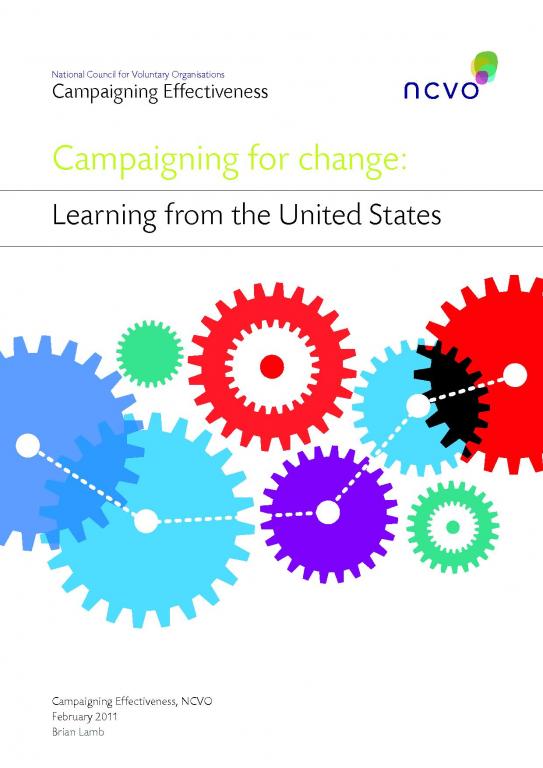 Hearing Brian talk through how campaigners could make use of Theory of Change was really helpful at bring the theory behind the tool found in various reports and guide that I’ve read to life.
Hearing Brian talk through how campaigners could make use of Theory of Change was really helpful at bring the theory behind the tool found in various reports and guide that I’ve read to life.
I came away from the time enthusiastic about if for the following reasons;
1. It get’s us to question our assumptions – One of the central features of the approach is to get you to name and provide evidence for the assumptions you’re making that lead you decide that the impact a certain input will have
I’ve long thought that we need to more to justify the decisions that we’re making between impact and outcome, and Theory of Change actively encourages you to do this, demanding you to list your assumptions and discuss why you’ve made them.
In doing so, I think its likely to force us to ask the question, what are the ‘most effective approaches I could use’ as opposed to ‘what existing tools do I already have that I need to use’.
2. It builds from impact up – The first thing that the approach asks you to do is to decide on the impact of your advocacy, this is defined as ‘the ultimate effect on the lives of those you’re seeking change for’.
Brian suggested that while this might sound like a straight forward question to answer, it often takes groups considerable time to come up with the answer to the question, but in doing so they help to reach common understanding of the change they’re seeking.
I know I’ve been in campaign planning sessions before where we’ve spent the majority of our time on agreeing a strategy to reach a policy solution; as opposed to asking what impact we want to that solution to have.
3. Provides clear building blocks – The approach is simple and logical. Working upwards from impact, to mapping  the strategies that will be needed to achieve this, to looking at the outcomes needed from activities to achieve this, to looking at the activities that will be required at the heart of the campaign.
the strategies that will be needed to achieve this, to looking at the outcomes needed from activities to achieve this, to looking at the activities that will be required at the heart of the campaign.
Also, because the built, there are lots of existing tools that already exist that can be used to help to guide our theories of change. In the session, Brian shared the work of the Harvard Family Research Project which has undertaken extensive research to identify a number of common approaches to policy goals and activities/tactics. Great source materials to help in campaign planning.
4. Gives us a common language – At the heart of the Theory of Change approach is the need for dialogues and discussion to reach conclusions. In the use of approaches like ‘so that’ chains (where you need to articulate a logical path between the steps you’re suggesting).
Throughout the process it provides opportunities for campaigners to clearly articulate their approach, but also invite others to test and question the logic. I can see how this is really helpful in unpacking the ‘mystery’ of our campaign planning to others, and helping to answer the hard questions
5. Helps to think about the best ways of allocating resources – You’re required to put all the outcomes and activities on the table in the process, rather than selecting those you think possible with the resources that you have.
Doing that means you can look afresh at how you might resource new approaches, or think creatively about new alliances to forge. The research also has some invaluable ‘checklists’ about what an organisation needs to have the capability to undertake effective advocacy.
My conclusion. That its worth investing the time into grappling with Theory of Change because it’s got huge applicability to campaigning and that its great to find someone to help work you through an example of the approach in person.
Campaign Totals 2012 – Home Office
 Total number of actions received between May 1st 2011 and May 1st 2012: 33,465
Total number of actions received between May 1st 2011 and May 1st 2012: 33,465
Number of postcards: 12,892
Number of emails: 20,573
Biggest campaign:No weakening of Protection for Animals in UK Laboratories – 13,914 actions.
Breakdown by topic and organisation:
[googleapps domain=”docs” dir=”spreadsheet/pub” query=”key=0ArsF-z0r3hFfdFpVV0l5V2lqUVBibUMwTlNtUmZManc&single=true&gid=1&output=html&widget=true” width=”400″ height=”200″ /]
Scorecard based on figures from 2010 to 2012;
[googleapps domain=”docs” dir=”spreadsheet/pub” query=”key=0ArsF-z0r3hFfdFpVV0l5V2lqUVBibUMwTlNtUmZManc&single=true&gid=2&output=html&widget=true” width=”250″ height=”200″ /]
Par score based on number of actions at 75th percentile, birdie score on the 85th percentile, and eagle score based on the 95th percentile
View the spreadsheet in google docs here. Information taken from Freedom of Information request returned in June 2012 and is presented as it was received from Home Office.
More about the ‘Campaigns Total’ project here.
Be first to get the information from other departments by subscribing to the site using the box on the right, adding http://thoughtfulcampaigner.org/ to your RSS feed or following me on twitter (@mrtombaker)
8 things I learned at Netroots UK
I had a great time at Netroots UK yesterday, it was one of those conferences where various elements of my campaigning world came together, a conference full of NGO friends
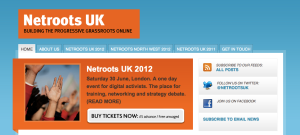 , Labour Party activists and lots of interesting people who I follow to help to collect ideas for this blog.
, Labour Party activists and lots of interesting people who I follow to help to collect ideas for this blog.
I’d strongly recommend that people go next year, and take some time to go back through the #NetrootsUK tag on twitter for a flavour of the discussion.
I came away with lots of reflections and a very long Evernote to go back and read, but here are 8 things that struck me immediately .
1 – We need to find self-replicating models for our campaigning. Paul Mason in a great overview of the UK campaigning sector described UK Uncut as a group that had changed the agenda.
Why? Because companies quickly became terrified of their branches being taken over, and that the model quickly grew from one action in London to many across the country, including involving many people who couldn’t immediately be identified as part of a radical movement.
Dani Paffard from UK Uncut on the same panel spoke on how they’d found the tactics they’d used to sustain media interest for much longer than they expected, and that it was a template that could easily be replicated.
2 – Training Matters– In the same seminar, Paul Mason identified on of the critical groups behind UK Uncut and the Occupy movement in the UK as those who’d attended and be trained at Climate Camp. They were he suggested ‘uber-activists + committed horizontalists who knew what to do’.
Adam Ramsay spoken of how many of those involved had been part of People and Planet as students and identified that as an important training ground, and suggested that while specific campaigns are like flowers that bloom from time to time, we need to invest in the roots that sustain them.
3 – We should be interested in who owns the internet – This wasn’t something that I’d spent much time thinking or indeed worrying about until last week, but hearing Sue Marsh from the Spartacus campaign speak about how they’d found blogs and chat rooms blocked during their campaigning on the impact of austerity on disabled people, you realise how important it is to make sure you have access to the tools you need to get out your message or organise your strategy.
4 – Parody Works – Jenny Ricks from Action Aid shared how they’d used parody to highlight the practices of Tesco and SAB Miller (makers of beer like Grolsch). Jenny suggested that parody has become much more popular because of the web, as it much easier to share and can be helpful in helping to shift a broader debate, in the case of Action Aid on tax dodging. She reminded us of the importance of ensuring significant research is available to back up the claims that are being made.
5 – That the fundamentals remain the same – In the closing session, we heard from Blue State Digital who used the examples of the It Gets Better and the Royal College of Nursing’s ‘Frontline First’ campaigns to remind us that campaigns:
- Need to make the most of moments.
- There is a thirst for personal connection even in digital campaigning.
- That relationships are long-term things to invest in.
- That online campaigning needs to drive offline activity.
6 – FoI is still a campaigning goldmine – Freedom of Information campaigner, Chris Coltrane reminded us of how easy at tool it is to use, and also that if you get told your request can’t be looked at because it costs too much money to always ask how they’ve made that calculation. My tips on using Freedom of Information are here.
7 – Presentation matters – The team from Who Funds You shared about their work looking at the transparency of UK think tanks, an important but potentially dry subject. However the front page of the site is a brilliant example of how to display the findings without hiding them in a press release. Karin Christiansen who’s behind the work also shared the following tips for anyone working on transparency issues suggested monitoring and ranking is the only way to get attention.
8 – We need to get out of our bubble – One of the final presenters, was Karina Brisby from the VOICE blogging project. She shared about how the project was set up to give voice to new people to share their perspectives on G20 and climate change summits, but also to ensure that the issues were communicated to those ‘outside the bubble’ by inviting bloggers to get involved who had diverse and different audiences.
Learning from Stop the Pipeline campaign
The Stop the Keystone pipeline campaign is one that may have passed many in the UK by but in the US its resulted in a huge victory for environmental campaigners.
In brief, the campaign was looking to halt the construction of a pipeline that would transport tar sands oil from Alberta, Canada across the Midwest of the US to the Gulf of Mexico. You can read more about the pipeline here, and a few weeks ago President Obama announced that he wasn’t approving the go ahead of the pipeline.
It’s a real success for the campaign despite the fact that the campaign believes it was outspent by approx. $60m to $1m by the oil companies behind the pipeline, and research has shown that spokespeople for the pipeline were much more likely to be featured in the media. Although those involved are keen to point out that the fight isn’t over.
One of the most striking tactics that the campaign used was a fortnight of action in Washington DC where over 1,000 people were arrested for taking part in illegal sit-ins. Watching some of the films from August are incredibly inspiring and moving but in many ways these actions were the culmination of over 2+ years of campaigning.
[youtube http://www.youtube.com/watch?v=ozmOQqRw0j4]
On Thursday, I joined a ‘Debrief’ organised the New Organizing Institute which featured speakers from a number of the organisations that had been involved in the campaign. It was a thought-provoking session, and I came away reflecting on the following lessons learnt from the campaign.
1 – The importance trusted leaders – One of the speakers, spoke about the importance of bringing Bill McKibben into the campaign. McKibben is the founder of 350.org and was one of the first to write about climate change for a general audience over 20 years ago. The speaker suggested that his involvement changed the dynamic of the campaign, as he was perceived by many as a trusted leader who brought credibility to the urgency of the campaign message.
It’s a reminder that as well as friends and family who remain the best ‘messengers’ for any issue, some authority sources can be incredibly powerful at mobilising a group of individuals. Who are these in our movements?

2 – They called for a bold action – Bill McKibben is clear that the arrests outside the White House was a key tool in moving the campaign from a local one in the states effected to a national one. The called for a bold action, for activists to do something very real and something powerful.
Social media was used to mobilise people to attend the sit-ins in Washington. Many of those who got arrested had not done so before, and the photos and visuals helped to define the issue – make it a visually compelling action, while running the event over two weeks helped to create a political drama that draws out the story, providing an ongoing story that reporters could focus on.
Watching the films from the fortnight you get an incredible sense of a community amongst those involved in the campaign.
3 – Building locally and ahead of time – Although the peak of the campaigns activities appears to have been in August, listening to speakers from both the Energy Action Coalition and Sierra Club, it’s clear that important work that was done over many years to build campaigning activities in local communities.
In the case of the Energy Action Coalition starting on campuses during the Bush administration, knowing that their would be a day when a group of trained and mobilised young people would be needed. While for the Sierra Club it was going to communities in Nebraska and other effected states, talking to people, sharing stories and mobilising them as part of the campaign, long before the attention was focused on Washington DC.
4 – Using political donors and volunteers – The campaign realised that they couldn’t counter the influence of the significant financial donations that the energy industry makes to elected officials in the US, but they could mobilise the tens of thousands of individuals who had made small donation to, and in many cases worked for the Obama campaign in 2008.
Using this tactics they were able to demonstrate the level of concerns amongst a critical ‘base’ that the president needs to re-engage ahead of the 2012 elections. Meetings at regional offices of ‘Organizing for America’, the Presidents election organisation, as part of a Obama Check Up Day also helped to demonstrate this. Although, we don’t have a similar culture of politician donations in the UK, I can still see opportunities in approaching an issue in this way.
5 – Collaboration and coalition – This wasn’t simply an outsider campaign strategy, the coalition was an especially broad one, with insider meetings happening with the White House at the same time that people were getting arrested outside. The campaign was able to bring together environmental groups, alongside farming groups (whose land was threatened by the pipeline), First-Nation communities, unions and other.
A number of speakers highlighted the importance of this, while recognising the challenges of holding it together, especially around the issue of the ‘jobs and growth’ agenda that is critical to many in light of the economic crisis . Weekly coordination meetings were held, but interestingly the campaign appears to have remained a ‘loose coalition’ as opposed to a tightly and more formally constituted one.
The 350.org folk have also written their reflections which are well worth a read.
Charity meetings with Government Ministers
The release of details of thousands of meetings between government minister and lobbying groups has received lots of coverage in the press in the last few days. Although the headlines have been on the number of meetings that ministers have had with business groups, there is also lots in the whole data that campaigners can learn from.
The Guardian estimates that charities had around 800 meetings with ministers in the last 12 months, unfortunately they haven’t provided a break of the classification that they used, but a quick play with the information suggests that the following charities had the most meetings;
[googleapps domain=”docs” dir=”spreadsheet/pub” query=”hl=en_US&hl=en_US&key=0ArsF-z0r3hFfdDNBLXRsekppNGt5OV9KNGRXVjRtcHc&single=true&gid=0&output=html&widget=true” width=”500″ height=”550″ /]
*These figures currently just include individual meetings in the data that organisations have had. It may change when coalition or roundtable meetings are included.
What else? It looks like lots of the meetings that were held between charities and government were classed as ‘introductory meetings’ this is perhaps to be expected at the start of a new government, but it’ll be important to ensure that this changes in the next 12 months and that representatives are invited to be consulted on policy.
Also, charities and campaigning organisations have been involved in a significant number of meetings with other charities, I count over 80 meetings like this in the date, which is perhaps indicative of the way that we often work and campaign in coalition, but a different approach to that taken by business group.
I plan to spend more time looking at the information later in the week, but please do use the comment section below to share your reflections on what the data tells us about routes to influence.
Be the first to know about new posts by subscribing to the site using the box on the right, adding http://thoughtfulcampaigner.org/ to your RSS feed or following me on twitter (@mrtombaker)
